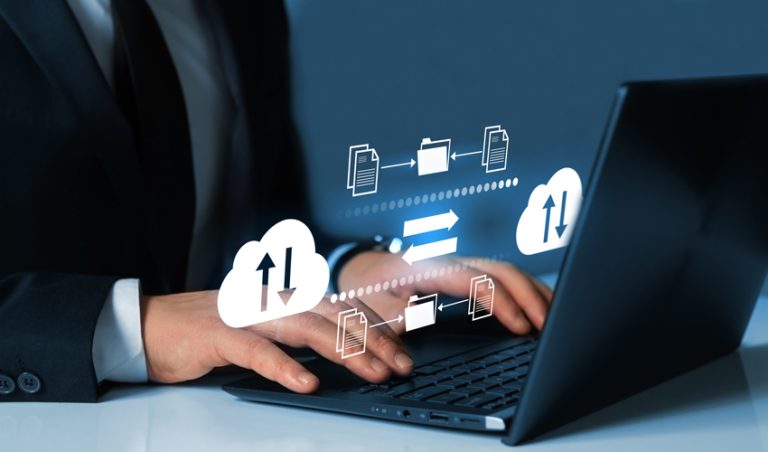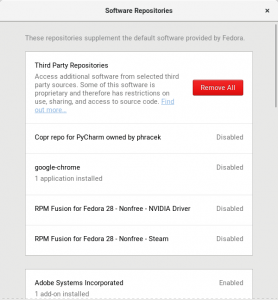
ERP is known for providing the heartbeat, backbone and the bookkeeping system of modern businesses. Companies need it to keep the wheels turning and the lights on. They rely on it to be a single source of truth and a journal of record but it is rarely seen as having an X-factor: that extra something that delights users and shows the value of extreme innovation. Even when spelled out, the term means next to nothing to the person on the street: it’s not glamorous in the way of a smartphone or even a smart, time-saving feature on a word processor or spreadsheet.
And yet, ERP systems are more important than ever and I would argue we are witnessing a unique inflection point. One of the many lessons of the pandemic has been to expect the unexpected. Of course, we pay lip service to hoary clichés such as “the only constant is change” but in reality we have moved from a largely linearly progressing world to one of constant disruption.
That’s not to say that there weren’t regular disruptions before: trade wars have always carried aftershocks and the startup culture of the past 25 years or so has seen incumbents being regularly discomforted and displaced. Think of Nokia, Blockbuster or most recently, Arcadia Group: victims of hubris and inertia who relaxed into their business models, processes and go-to-market principles were swept away mercilessly when better came along.
No wonder that so many companies are accelerating digital transformation: Covid has been a catalyst for change (bricks to clicks, office to remote, physical to virtual, in person to collect/deliver, re-engineered supply-chains and more) and has accelerated everything to the nth degree. To survive and thrive we really have had to live up to that favourite concept of conference memes, adaptability.
Enter the new ERP
All of this has huge ramifications for company culture and leadership of course but it also means that our office back-ends, front-ends, processes and essential functions need to be in optimal condition, putting enterprise resource planning in the spotlight. What if we could apply the X factor to ERP to help do that?
And we really are dealing with the unknown. Consider the following imponderables.
Do you know from where your people will be working in the summer of 2021? Will there be (or continue to be) a major shift in the way that you market and sell? What will happen to properties you own or rent? Has buyer behaviour changed forever in the market you serve? Can you predict with any confidence demand for the products or services you provide?
With such constant uncertainty, business leaders are understandably struggling to identify a sustainable strategy and can no longer rely on traditional outlooks. Instead, short-term, mid-term and long-term plans need to be constantly re-worked as we exist in a world of flux.
So, another question: at a time when certainty is so difficult to come by, how do organisations plan with confidence? And what can they do to maximise their potential to emerge from this crisis with a robust business that will be able to cope with the next disruption?
People-centric
To even begin to deal with these, an ERP system needs to have an emotional context or what we call a “people experience”. It might sound surreal to suggest that users would consider having some sort of emotional connection with an ERP system, but in these days of smartphone apps, where the user experience is paramount, it should be no surprise that such an evaluation of ERP is becoming more prevalent. Indeed, Info-Tech produces an Emotional Footprint study examining user responses to ERP across a range of metrics, including the vendor’s level of trustworthiness and integrity, how respectful it is of customers and whether the software is reliable, saves times and enables productivity. Integrating an emotional evaluation into the assessment of ERP software is a new development but given how accustomed users have become to consumer applications being interactive it makes sense that this too will become integral to measuring the X-factor of an ERP system.
One way to ensure ERP delivers smooth interactions is by configuring it to be pre-built for specific industries with known processes. That’s achieved by lots of study into how industries work, the processes they use and the preferred ways of inputting and receiving information so that configurations are already strong and relevant, accelerating go-live dates.
The software system has to become more than a digital repository. In the new world of smarter software it becomes a digital assistant that notes your activities and proactively makes suggestions to help you work more effectively. It takes drudge work away from the user and lets human beings do what they are best at (being creative, making decisions, using wisdom) and machines do what machines are best at (being accurate, parsing and calculating fast). The user can ask questions and expect helpful answers: for example, asking the assistant to populate timesheet entries based on calendar notes or expedite invoicing without errors by looking at previous entries and detecting patterns.
As our People-Led Transformation study last year showed the top three priorities for future application strategies globally is building simple and intuitive user interfaces, using automation to speed up workflows and allowing users to communicate with the ERP system using whatever application they want, such as Slack or WhatsApp. New and emerging technologies are also giving this enterprise software an unfair advantage. AI allows us to supercharge the automation of analytics and forecasting, empowering the discovery of insights that would once have been the digital equivalent of finding needles in haystacks. Cloud means that services are adaptable on a regular basis using composable components and are accessible in most languages, from anywhere, across devices, as well as interoperating with third party applications using APIs.
Holding back the fears
And the real X-factor? Well, under the hood, one dynamo is a microservices architecture where core code is broken up into a huge number of components meaning that apps or developers can reassemble them for new purposes. The user is not stuck with the monolithic platforms of old and the ERP can be bent and shaped in favour of the user.
As Ray Wang of Constellation Research has said, “Mid-sized enterprises will be key to our post-Covid recovery. Until now, ERP was often holding these organisations back, but we’re seeing the emergence of business-critical systems delivered in a way that customers can simply benefit from the exact functionality their people need to be effective.”
That’s exactly right. After decades where the ERP has been recalcitrant (i.e. not focused on its customers) and almost something we have had to fight with to gain productivity advantages. We are on the cusp of a once-in-a-generation shift to a new, highly resilient architecture. It will be flexible, purpose-built for industry and company size, cloud-based and AI-powered. Finally, ERP today has the X factor.
Photo by Cole Ankney on Unsplash

Interested in hearing industry leaders discuss subjects like this and sharing their experiences and use-cases? Attend the Cyber Security & Cloud Expo World Series with upcoming events in Silicon Valley, London and Amsterdam to learn more.







